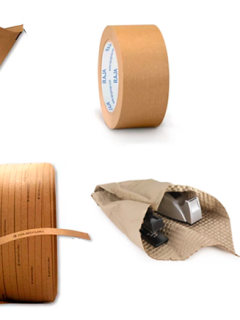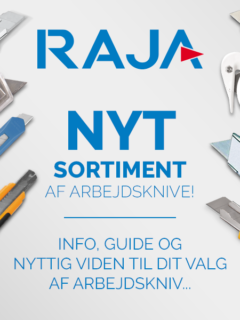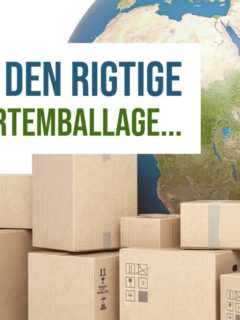When you export and send your goods on what are often very long journeys, they need to be transported in solid, sturdy and stable packaging. Transport boxes made of wood are suitable for this, but not all wooden packaging is suitable for export; it must meet specific standards. In this post we will focus on what ISPM 15 is and what the standard contains.
ISPM 15 – against pests
Woodenshipping crates are often made of raw wood, which can be infested by pests and pose a real danger to the local forest. For this reason, the ISPM 15 standard applies to export packaging made of solid wood in many countries. If a package bears the ISPM 15 stamp, the package/wood has been treated against pests. The treatment prevents pests (which attack raw wood/living trees) from being transported with the packaging. This standard is controlled by the respective National Plant Protection Organisations (NPPOs) of the importing and exporting countries. They control the application of the correct wood treatment, the use of the ISPM 15 stamp and its application by the manufacturer.
ISPM 15 marked wood packaging can be treated in different ways. In Denmark, only heat treatment is approved – other treatment methods must be approved by the Danish Board of Agriculture before use.
Countries with requirements for the ISPM 15 mark may have additional requirements for pressure impregnation, freedom from bark or that the packaging must be new. For information on the countries concerned, it is advisable to contact the Danish Board of Agriculture – via this link you will find an overview of the different countries’ export requirements.
The ISPM 15 standard applies throughout the EU and a further 84 countries such as China, the USA and Australia.
What does the ISPM 15 Standard mean?
ISPM 15 is a phytosanitary standard under the International Plant Protection Convention( IPPC ) of the United Nations Food and Agriculture Agreement Organizations( FAO ).
What does the ISPM 15 standard contain?
The ISPM 15 standard applies only to solid wood packaging with a thickness of more than 6 mm. such as pallets, bracing material, cable reels, wine boxes etc.Wooden packaging thinner than 6 mm or which has been glued, heated or pressed during processing, such as chipboard and plywood, does not need to be treated, as does packaging made of wood wool and sawdust. They were exposed to very high heat when they were made.
To obtain the ISPM 15 certificate, the wood packaging must be treated accordingly. This can be done by heat treatment at a core temperature of 56°C (133°F) for at least 30 minutes or by fumigation with methyl bromide. Chemical pressure impregnation (CPI) is only recognized if the required temperatures are reached. The packaging then receives the ISPM 15 stamp. This must be affixed permanently and legibly on two opposite sides and must contain the following information:
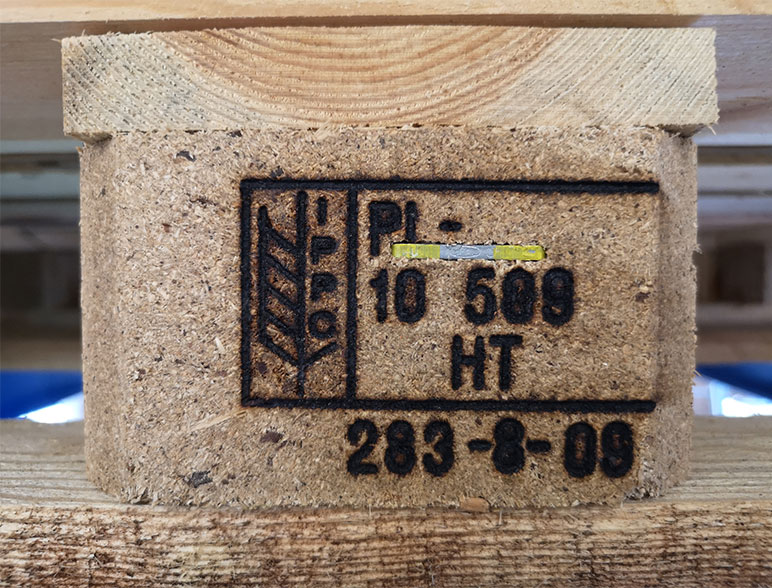
IPPC symbol
The symbol must always be attached to the left of the other information.
Country code
This must be the international ISO country code with two letters: e.g. DE for Germany or DK for Denmark.
Manufacturer / handler code
This is a uniform code assigned to the producer or trader of wood packaging. The number and arrangement of code numbers or letters is assigned by the NPPOs. In some countries this includes e.g. region codes, e.g. BW for Baden-Württemberg.
Treatment code
This is an abbreviation of IPPC for the treatment method used and should be on its own line or separated from the rest of the information by a hyphen.
| Treatment code | Type of treatment |
| HT | Heat treatment |
| MB | Methyl bromide (producers in the EU have not been allowed to use this type of treatment since 2010, but packaging with this treatment method can still be imported) |
| CPI | Chemical pressure impregnation |
In the case of older wood packaging, additional information is often available DB for debarked (= debarked). However, in the meantime debarking is planned as a mandatory measure, so this labelling is no longer necessary (this is a German example, for the sake of explanation).
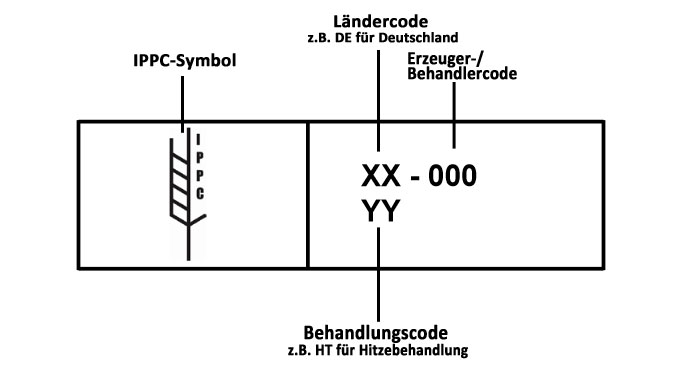
Consignor is responsible
The shipper has to ensure that the imported packaging complies with the ISPM 15 standard. If there is no marking, the customs authorities may even reject the goods. If you buy wooden packaging from RAJA that bears the ISPM 15 stamp, you will receive the corresponding export certificates on request.
Sources and useful links:
- ISPM 15 countries
- IPPC – the International Plant Protection Convention
- The Danish Board of Agriculture on wood packaging
- DI – Danish Industry, has also made an overview.











